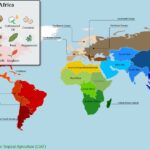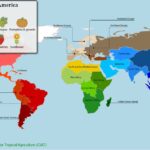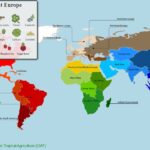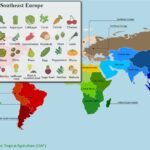Do you think you eat crops that are typical of your culture? People have always traveled a lot and tried to trade in animals and crops. Many crops are thought to be traditional, but in reality they are foreign and have been imported from other countries. In ancient times, trade routes were created, which traders used to spread many types of goods, including food. A new study found that up to 69% of the world’s diet is made up of foreign foods. This means that these plants have been domesticated for a long time in a completely different part of the world.
Map with the real origin of food
As people discovered new parts of the planet, people exchanged seeds and seedlings. Researchers at the International Center for Tropical Agriculture (CIAT) made a map where we can now easily see how each region of the world contributed a staple crop to the global diet and the direction of this contribution.

Trade and conquest of the world took care of the spread of food
On the map we find the true origin of today’s 151 basic food crops. The greatest spread of crops from other parts of the world occurred mainly after 1492, when crops from Europe began to be imported to America and, conversely, crops from America to Europe. While North America has given us pumpkins, sunflowers, blueberries and cranberries, for example, rice, watermelon and coffee come from Africa. The accompanying study provides some interesting insights into how we obtain and consume food. In many regions, people are dependent on foreign crops that are far from the center of origin.
Researchers also analyzed data on food production provided by the Food and Agriculture Organization. It has been found that fat-producing crops, such as oil palm, have been the fastest growing since the 1960s. The map and basic research builds on the foundations laid by Soviet geneticist Nikolai Vavilov, who traveled the world in the 1920s to collect crop samples as close as possible to the origin of their domestication. Researchers have launched a website where you can explore the origins of all these plants and their relationship to different regions around the world. You can also see the map with the origin of food in individual parts of the world below.
Source: International Center for Tropical Agriculture (CIAT)























